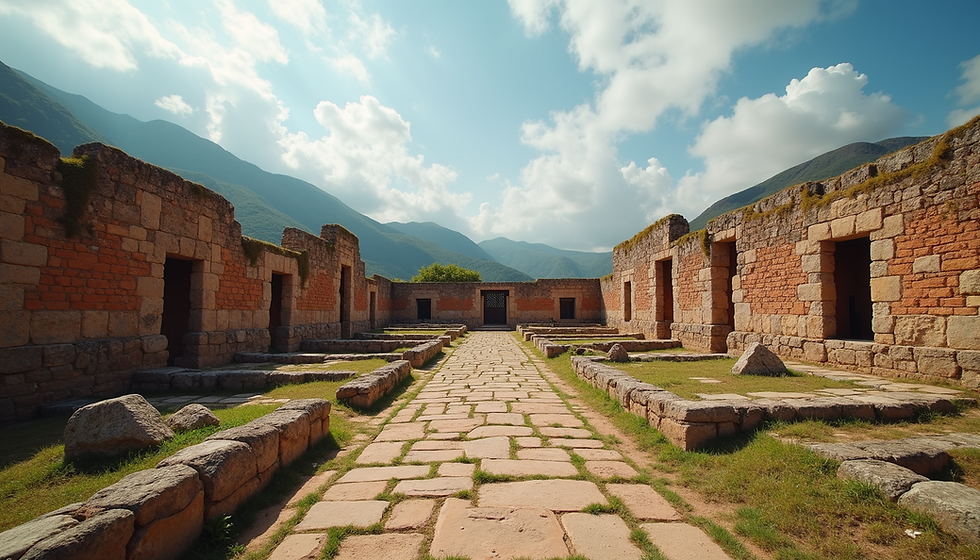Reflections from Robben Island: Lessons in Resilience and Humanity
- Joni Roberts
- Oct 31
- 5 min read
Updated: 1 day ago
Some journeys change you quietly but profoundly. They confront you with the weight of history — not as words on a page, but as echoes in the air. My visit to Robben Island in Cape Town, South Africa, was one of those journeys.

I rarely research destinations before visiting. I prefer to arrive curious and unguarded, allowing a place to teach me what I need to know. On this trip — my second to South Africa — I was traveling for work, conducting site visits in Cape Town and Durban for future study abroad and class extension opportunities.
When my hosts in Cape Town recommended visiting Robben Island, where Nelson Mandela was imprisoned for 18 of his 27 years, I decided to go. As usual, I chose not to read about it in advance. I wanted to experience it as it unfolded — raw, real, and unfiltered.

Robben Island lies about seven kilometers (four miles) off the coast of Cape Town, but its separation from the mainland is far deeper — defined by centuries of isolation and injustice.
Since the 17th century, the island has served as a place of exile. Dutch colonizers first used it to imprison Indigenous leaders, enslaved people, and political dissidents. In the 19th century, it became a leprosy colony, where those diagnosed were forcibly removed from society, divided by gender, and never allowed to return home.
During apartheid, Robben Island was transformed into South Africa’s maximum-security prison for Black and Coloured men who resisted racial oppression. Among its prisoners were Nelson Mandela, Robert Sobukwe, and Walter Sisulu— figures who would later become central to the country’s liberation.
In 1999, the island was designated a UNESCO World Heritage Site, recognized as both a symbol of unimaginable suffering and the indomitable strength of the human spirit.

The ferry ride to the island took about 30 minutes. The view of Cape Town’s skyline faded into mist as the waves grew rougher, the air colder. Onboard, a short film gave a preview of the island’s history, but no video could capture the emotional weight of what was to come.
When we arrived, our group boarded a bus for a guided tour. The guide began by explaining the island’s early use as a leprosy colony — a part of its history I found especially moving as a public health professional.
Those sent there were permanently separated from their families and communities. In total, 41 children were born on the island, but each was taken from their mother at birth under the false belief that leprosy could be passed from mother to child. It was a stark reminder of how fear and stigma can distort health policy and strip away humanity in the process.
From the bus, we stopped briefly at the limestone quarry, one of the most grueling and symbolic sites on Robben Island.

It was here that Nelson Mandela and many others were forced to break stone under the blinding sun for hours each day. The white limestone reflected the sunlight so intensely that it caused permanent eye damage for many prisoners, including Mandela. The dust also led to respiratory problems and long-term health complications.
Despite the harshness, this site became an unlikely place of learning and unity. A small cave in the middle of the quarry — the only source of shade — served as a toilet, dining area, and informal classroom. Prisoners, many of whom were teachers, doctors, and lawyers, used this space to educate one another. From this act of collective resilience came the enduring phrase: “Each one teach one.”

As I looked out at the quarry from the bus window, I tried to imagine the heat, the glare, the exhaustion — and the determination it must have taken to hold on to one’s dignity in a place designed to destroy it.
The final portion of the visit was a walking tour of the maximum-security prison, led by Mr. Derrick, a former political prisoner. His calm, steady voice carried the kind of authority that only comes from lived experience.

He led us through the communal cells, where up to 90 men lived together under brutal conditions. Even within the walls of the same prison, apartheid’s racial hierarchy was enforced — Black prisoners received smaller food portions, thinner clothing, and fewer privileges than Coloured prisoners.

Finally, we reached the corridor of single cells.
I stood in front of Nelson Mandela’s cell — a small, stark space no larger than a walk-in closet. Inside were only a thin sleeping mat, a small table, and a bucket for sanitation. No bed. No comfort. Just concrete walls that had witnessed both immense suffering and unshakable resolve.

Standing there, I felt an overwhelming stillness. The air was heavy with history, yet the space radiated a quiet strength — a reminder that freedom is as much a state of spirit as it is of circumstance.
At that moment, I noticed something striking: I had no cell service inside the prison. Every attempt to connect failed. It felt poetic — as if the island itself demanded that visitors disconnect from the outside world and bear witness fully, without distraction.
As I walked through the corridors, I couldn’t help but draw comparisons to slavery — the deprivation, the control, the systematic dehumanization. The similarities were painful and undeniable.
Our guide shared that after the prison closed, few former prisoners ever pressed charges against their captors. He said he didn’t know why. My instinct is that many wanted simply to move forward — to reclaim their lives, not live tethered to the past. After enduring such trauma, perhaps freedom itself was justice enough.

What lingered most, though, was the reminder that even decades later, some people still defend apartheid’s legacy. It was a chilling reflection on how ideology can outlive even the institutions that built it.
On the ferry back to Cape Town, a short film described Robben Island as “a paradise — a human island.” The irony was almost unbearable. To call a place of pain and oppression a paradise felt like an erasure of its truth.
And yet, in another sense, the island is deeply human — not because it was paradise, but because it embodies both the cruelty and compassion of which humanity is capable.
Amid the weight of it all, there were small moments of light. Our bus stopped for a turtle crossing the road, and along the shoreline, I spotted African penguins moving in their awkward, joyful way. Even in a place once defined by suffering, life continues — a quiet symbol of endurance.

Robben Island is not just a site of memory — it is a testament. It stands as a reminder of the resilience of those who endured, and the responsibility of those who come after to remember.
Looking out over the quarry and standing in front of Mandela’s cell, I was struck by the power of place — how certain spaces hold stories that transcend words.
Visiting Robben Island is not easy, nor should it be. It is a pilgrimage — one that asks us to reflect not just on history, but on our collective humanity, and the work still required to honor the sacrifices made for freedom.





Comments